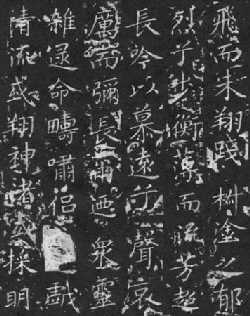| Created in China > Art Treasures > Chinese Calligraphy > Calligraphy Elites |
|
Wang Xianzhi
Wang Xianzhi (344-386), the seventh son of Wang Xizhi and son-in-law of the Emperor Wendi of the Eastern Jin Dynasty, enjoyed a reputation as a young calligraphy master and was the pride of his father. He was appointed to various government posts and died a high-ranking government official. Wang Xianzhi was accomplished in writing caoshu (cursive script) and lishu (official script s). He was also skilled at painting. As a small boy, Wang Xianzhi studied calligraphy under his father and showed outstanding talent. However, he was not limited to his father's teaching. Instead, he made creations and formed his own style. An anecdote about his practicing calligraphy goes like this: once his father came up stealthily from behind and tried to yank the writing brush from 7-year-old Wang Xianzhi. Surprisingly, the son was holding the brush so tightly that the father was unable to take it away from his hand. With much emotion, the father sighed that the son would become an accomplished calligrapher in the future. Another time little Wang Xianzhi wrote huge-sized characters on a
In an effort to improve the art, Wang Xianzhi absorbed the best of Zhang Zhi, a calligrapher proficient in caoshu (cursive script) in the Han dynasty , and became an expert at caoshu. His use of the brush pen was innovative and turned the unsophisticated ancient style into a new style known for its boldness. His influence on the calligraphers of later generations was enormous. He was also known as the little calligrapher sage, second only to his father. His authentic works have been passed down in history and are available today. His masterpieces include Luo Shen Fu and Yuban Shisan Hang . Author: Jessie |
||||||
 |

